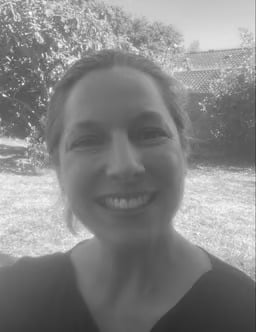Group 7 (Halogens) (Edexcel IGCSE Chemistry (Modular)) : Revision Note
Physical properties of Group 7 elements
The elements in Group 7 are known as the halogens
These are fluorine, chlorine, bromine, iodine and astatine
These elements are non-metals that are poisonous
All halogens have similar reactions as they each have seven electrons in their outermost shell
Halogens are diatomic, meaning they form molecules made of pairs of atoms sharing electrons (forming a single covalent bond between the two halogen atoms)
Trends in physical properties
At room temperature, the halogens exist in different states and colours, with different characteristics
The properties of the Group 7 elements
Halogen | State & appearance at room temperature | Characteristics | Colour in solution |
|---|---|---|---|
Fluorine | Yellow gas | Very reactive, poisonous gas | - |
Chlorine | Pale yellow-green gas | Reactive, poisonous and dense gas | Pale green |
Bromine | Red-brown liquid | Dense red-brown volatile liquid | Orange |
Iodine | Grey solid | Shimmery, crystalline solid that sublimes to form a purple vapour | Dark brown |
The melting and boiling points of the halogens increase as you go down the group
This is due to increasing intermolecular forces as the atoms become larger, so more energy is required to overcome these forces
Graph to show the melting and boiling points of Group 7 elements

This graph shows the melting and boiling points of the Group 7 halogens
At room temperature (20 °C), the physical state of the halogens changes as you go down the group
Fluorine and chlorine are gases, bromine is a liquid and iodine is crumbly solid
The colours of the halogens also change as you descend the group - they become darker
Appearance of Group 7 elements

The physical states and colours of chlorine, bromine and iodine at room temperature
Examiner Tips and Tricks
Exam questions on this topic occur often so make sure you know and can explain the trends of the Group 7 elements in detail, using their electron configurations.
Predicting properties in Group 7
Chlorine, bromine and iodine react with metals and non-metals to form compounds
Metal halides
The halogens react with some metals to form ionic compounds which are metal halide salts
The halide ion carries a -1 charge so the ionic compound formed will have different numbers of halogen atoms, depending on the valency of the metal
E.g., sodium is a group 1 metal:
2 Na + Cl2 → 2 NaCl
Calcium is a group 2 metal:
Ca + Br2 → CaBr2
The halogens decrease in reactivity moving down the group, but they still form halide salts with some metals including iron
The rate of reaction is slower for halogens which are further down the group such as bromine and iodine
Formation of sodium chloride

Sodium donates its single outer electron to a chlorine atom and an ionic bond is formed between the positive sodium ion and the negative chloride ion
Non-metal halides
The halogens react with non-metals to form simple molecular covalent structures
For example, the halogens react with hydrogen to form hydrogen halides (e.g., hydrogen chloride)
Reactivity decreases down the group, so iodine reacts less vigorously with hydrogen than chlorine (which requires light or a high temperature to react with hydrogen)
Fluorine is the most reactive (reacting with hydrogen at low temperatures in the absence of light)
Displacement reactions
Displacement reactions
A halogen displacement reaction occurs when a more reactive halogen displaces a less reactive halogen from an aqueous solution of its halide
The reactivity of Group 7 elements decreases as you move down the group
You only need to learn the displacement reactions with chlorine, bromine and iodine
Chlorine is the most reactive and iodine is the least reactive
Chlorine with bromides & iodides
If you add chlorine solution to colourless potassium bromide or potassium iodide solution a displacement reaction occurs:
The solution becomes orange as bromine is formed or
The solution becomes brown as iodine is formed
Chlorine is above bromine and iodine in Group 7 so it is more reactive
Chlorine will displace bromine or iodine from an aqueous solution of the metal halide
Cl2 + 2KBr → 2KCl + Br2
chlorine + potassium bromide → potassium chloride + bromine
Cl2 + 2KI → 2KCl + I2
chlorine + potassium iodide → potassium chloride + iodine
Bromine with iodides
Bromine is above iodine in group 7 so it is more reactive
Bromine will displace iodine from an aqueous solution of the metal iodide
bromine + potassium iodide → potassium bromide + iodine
Br2 + 2KI → 2KBr + I2
Summary table of the displacement reactions of the halogens: chlorine, bromine and iodine
| Chlorine (Cl2) | Bromine (Br2) | Iodine (I2) |
|---|---|---|---|
Potassium chloride (KCl) | x | No reaction | No reaction |
Potassium bromide (KBr) | Chlorine displaces the bromide ions Yellow-orange colour of bromine seen | x | No reaction |
Potassium Iodide (KI) | Chlorine displaces the iodide ions Brown colour of iodine is seen | Bromine displaces the iodide ions Brown colour of iodine is seen | x |
Examiner Tips and Tricks
Displacement reactions are sometimes known as single replacement reactions.

You've read 0 of your 5 free revision notes this week
Unlock more, it's free!
Did this page help you?

